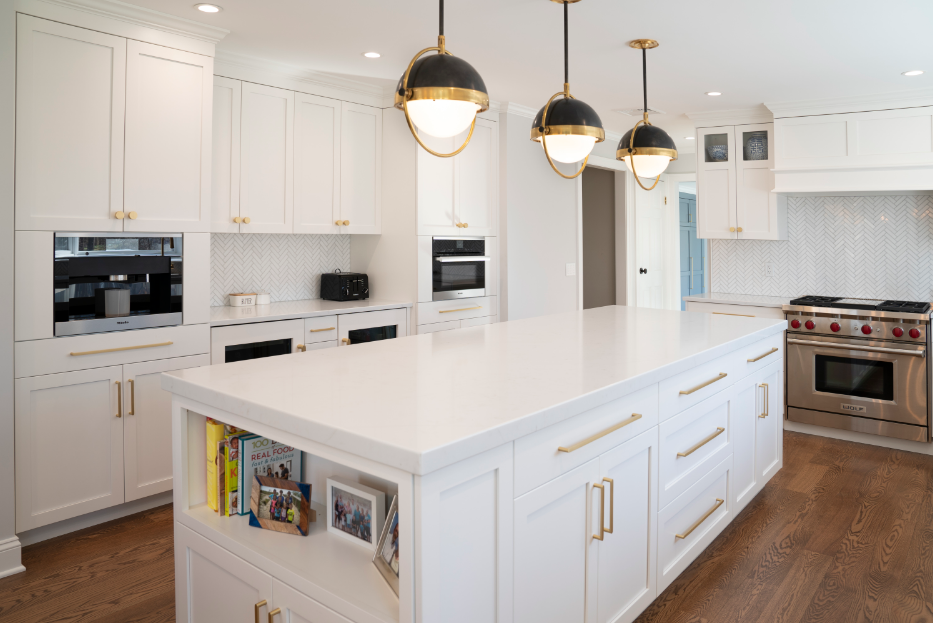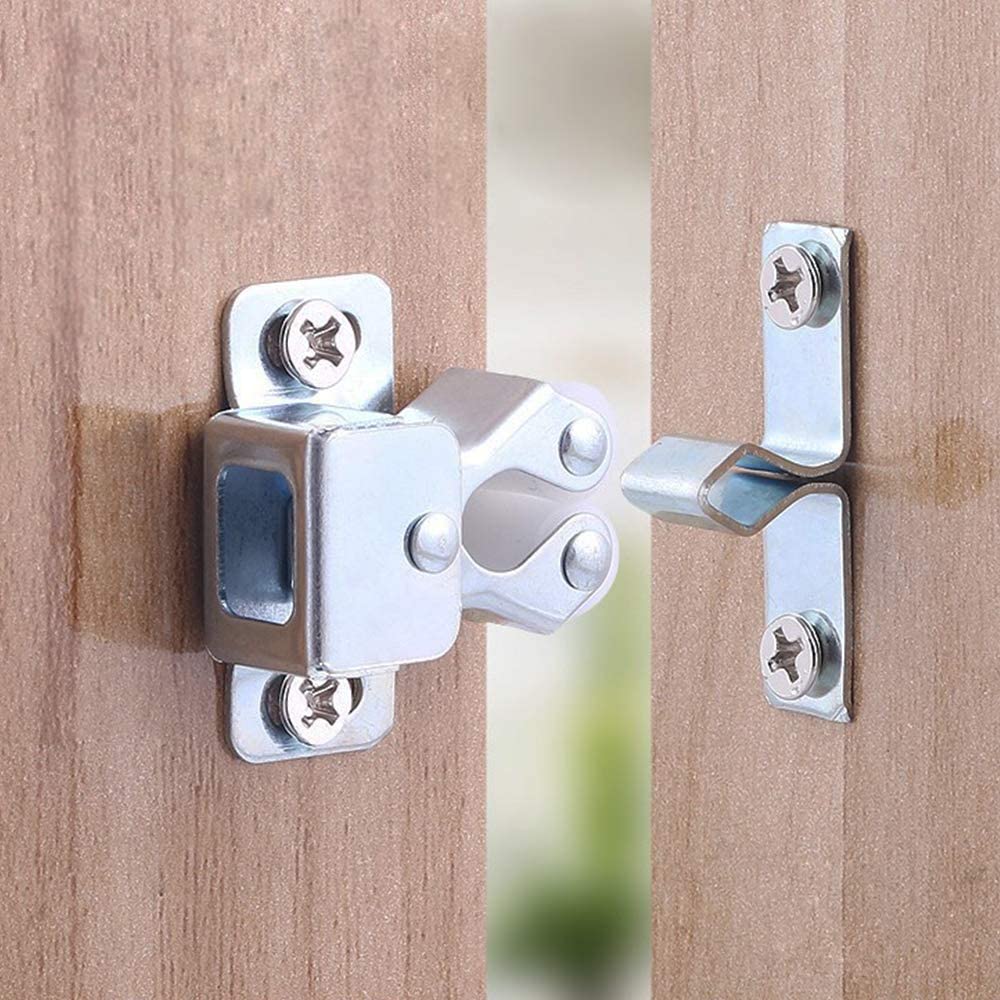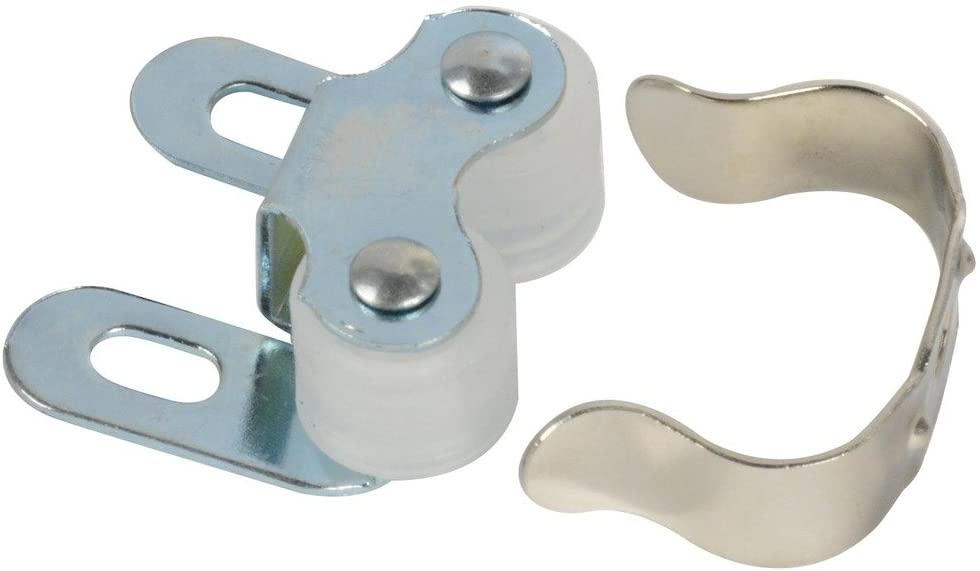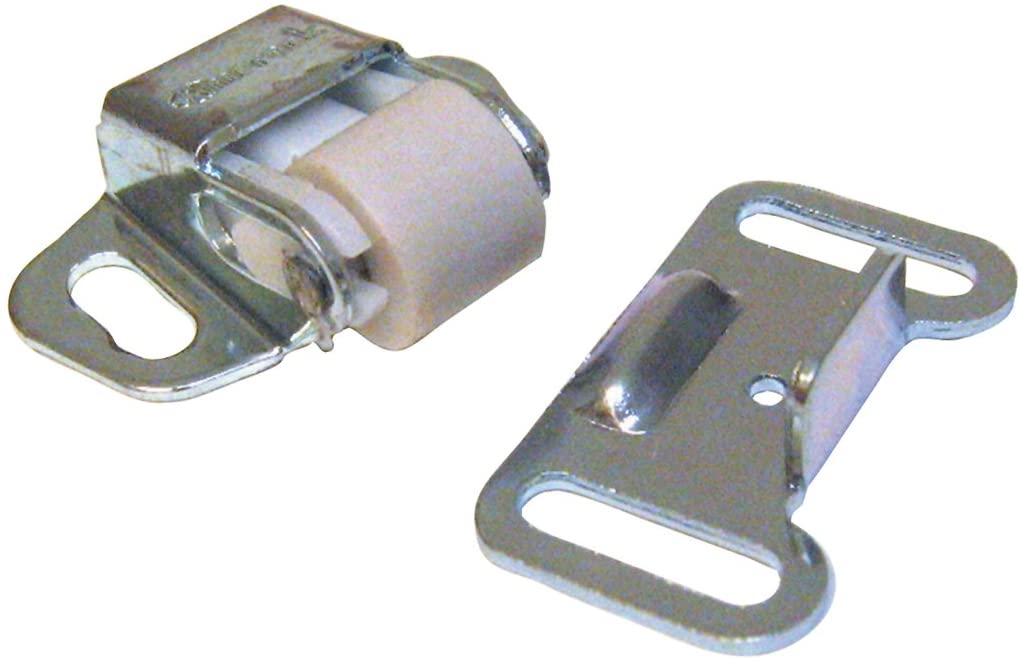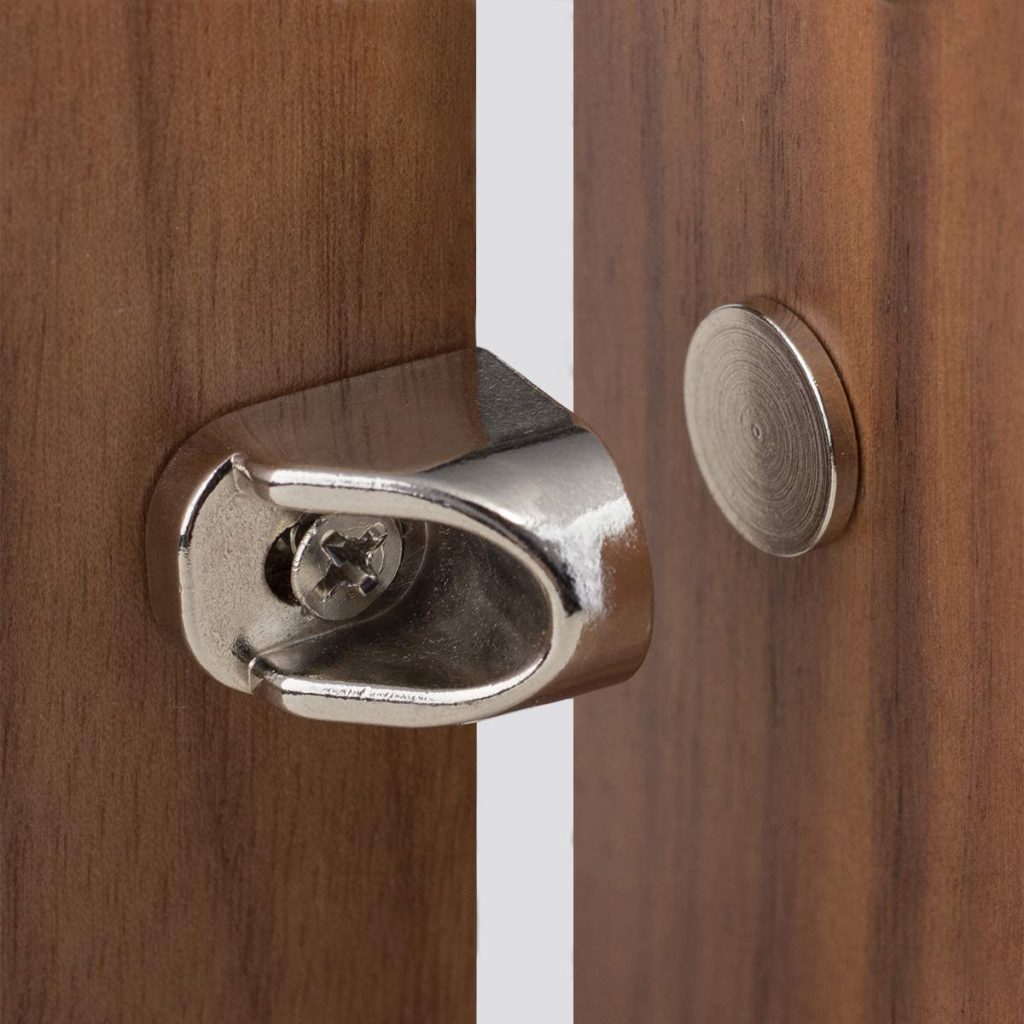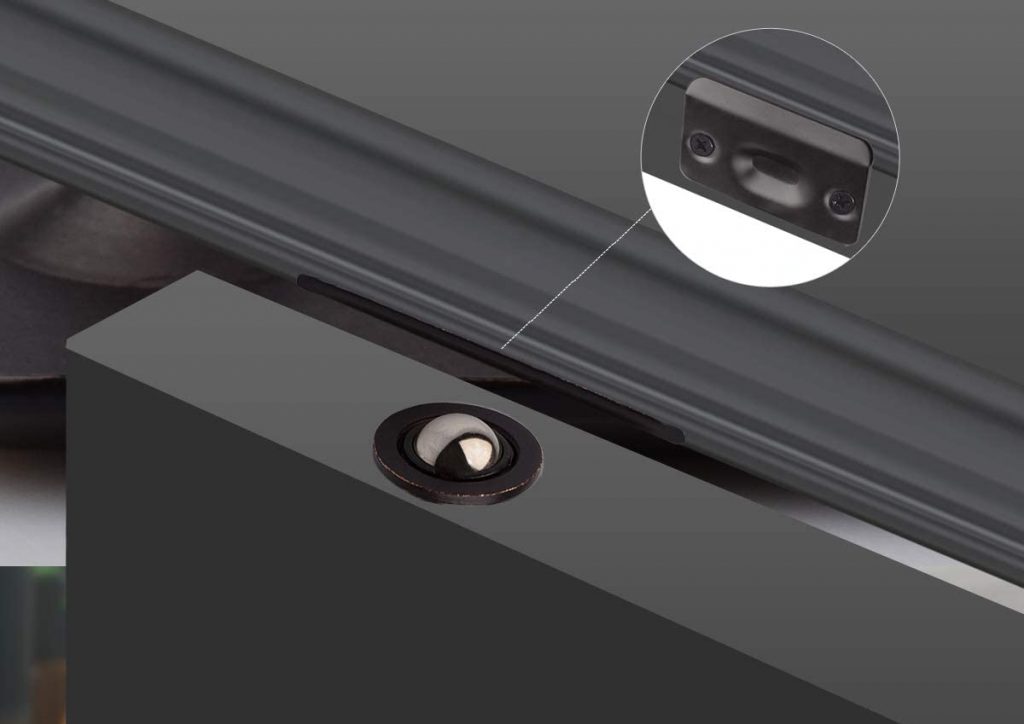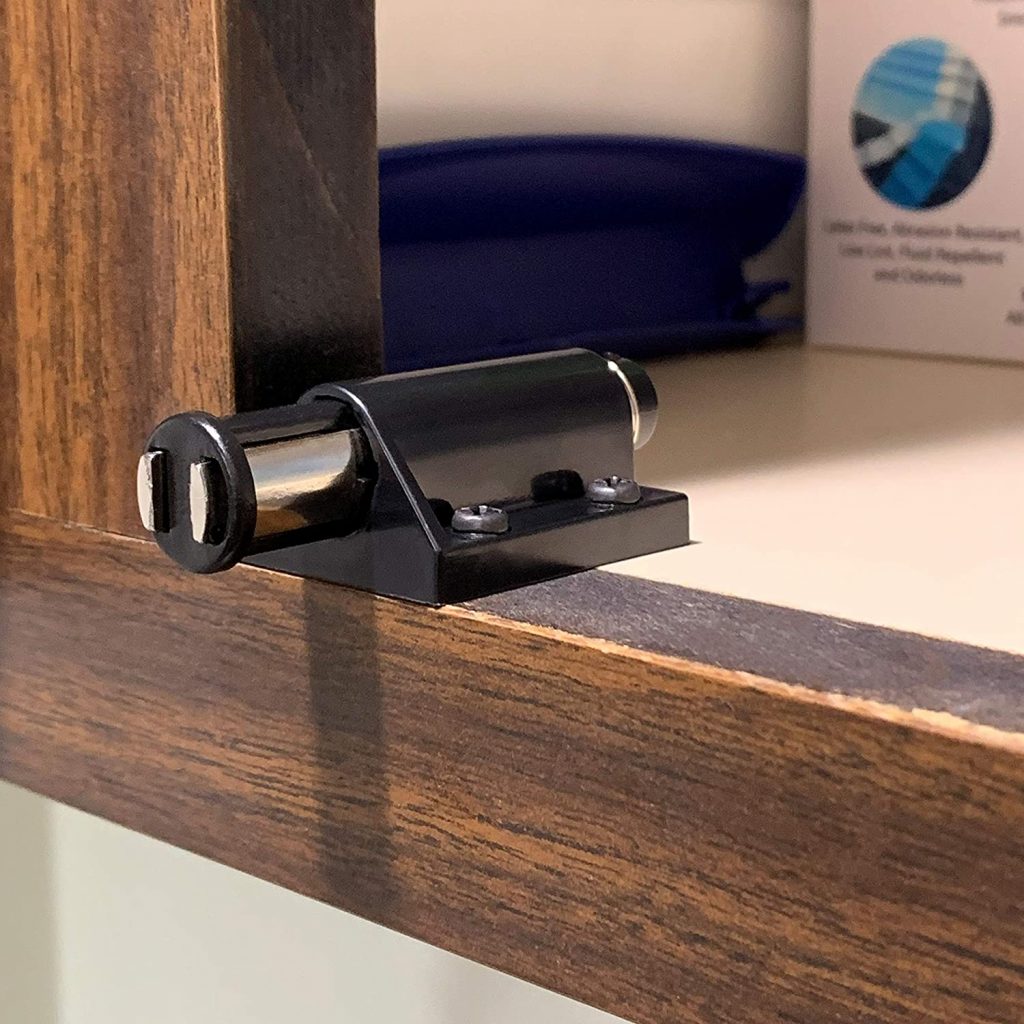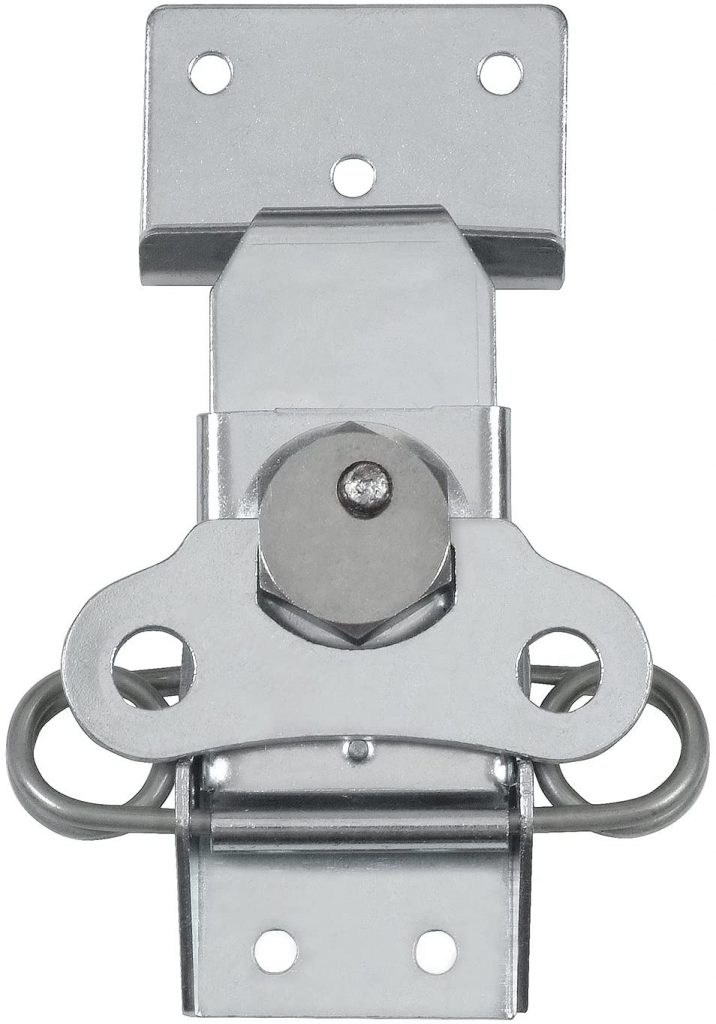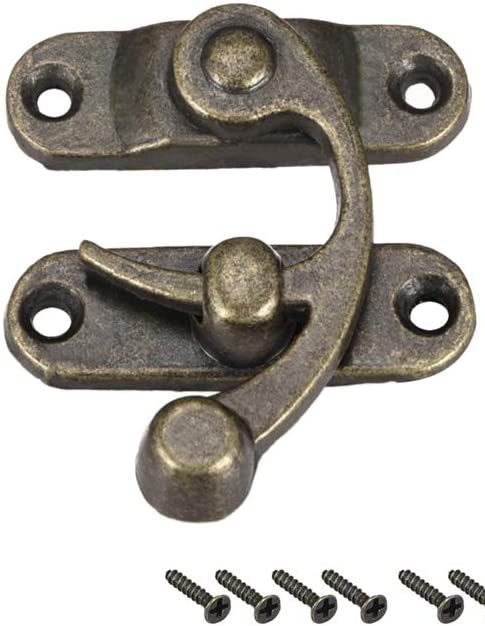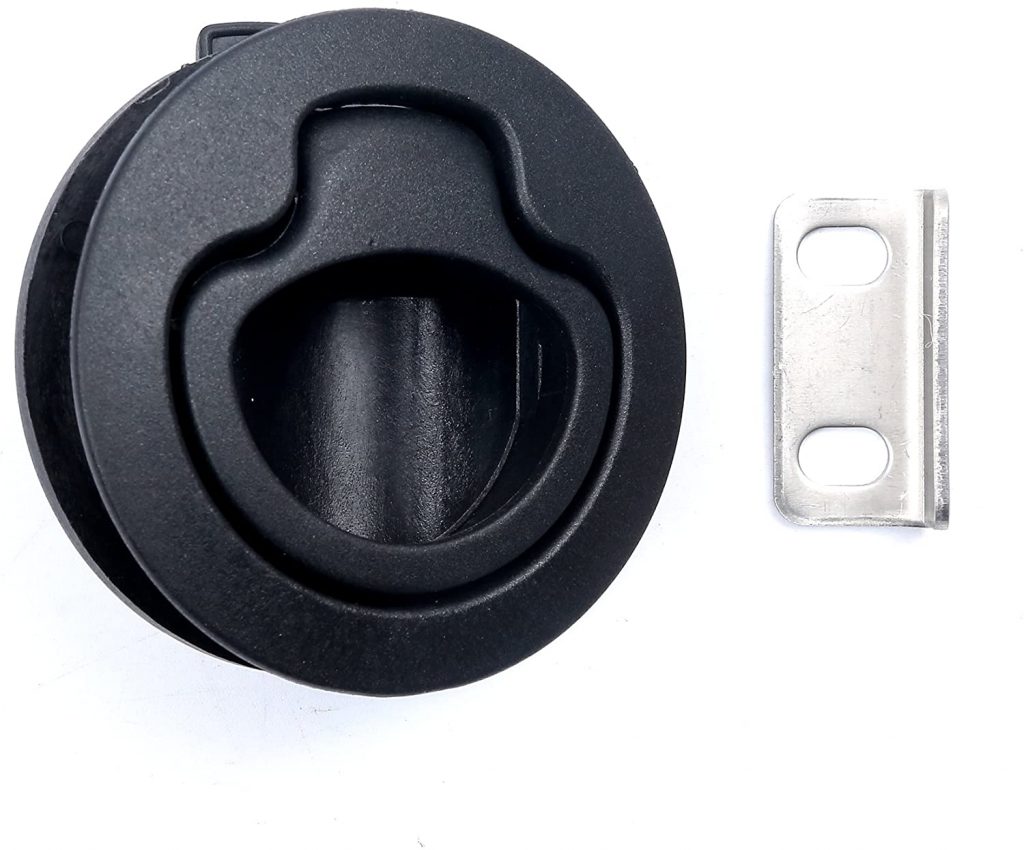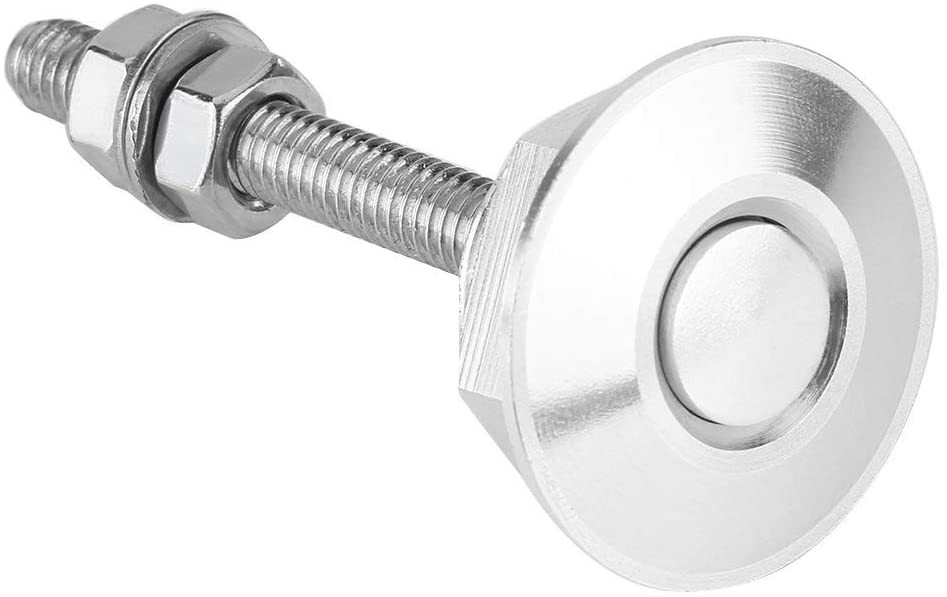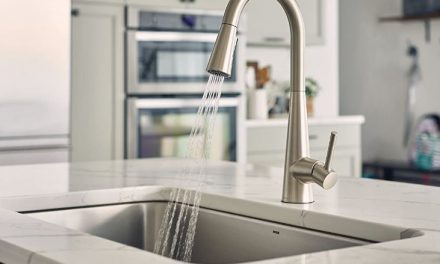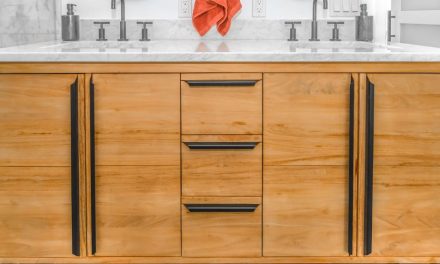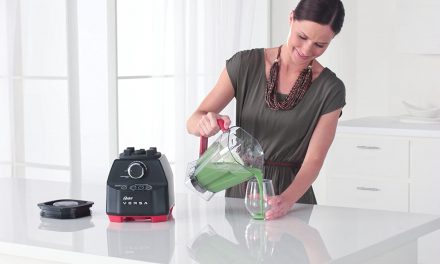Cabinets are the gold standard of storage in home environments. We’d be lost without our kitchen cupboards, our shop shelving, and our entertainment centers. And while cabinet design and hardware is important, a cabinet catch can really tie it together. But what is a cabinet catch?
Simply put, a cabinet catch keeps cabinet doors from opening when they’re not being used. Whether in living rooms, kitchens, bathrooms, shops, or RVs, cabinet catches can help keep your cabinets closed. While you often don’t need cabinet catches, they provide a variety of benefits.
For one, they can keep dust (and other grime) off your dishes. For another, they can keep animals and younger children out of the cupboards. They’re also great for keeping minimalist spaces looking streamlined and might be especially helpful if you live in an earthquake prone area. And sometimes, especially in shops and RVs, you need cabinet catches.
In this article, we’ll talk about the most popular kinds of catches and latches for kitchen and bathroom cabinets, as well as more heavy-duty areas, like the garage or even an RV. We’ll look at cabinet bumpers and figure out which catch will be best for you. But first, we need to clear up a few terms.
Catches vs. latches
Two terms that get thrown around a lot when talking about cabinet doors are catches and latches. Some people use the terms interchangeably, while others make a number of distinctions between them. This is because these terms do have a few different meanings.
When talking about hardware construction, the term latch often refers to the piece that is attached to the cabinet door, while a catch plate is the piece that is mounted to the base of the cabinetry (also called the carcass). Generally speaking, though, the difference between hardware sold as a catch and hardware sold as a latch is visibility.
A latch is a type of catch that is mounted on the front (face) of a cabinet door or doors. It generally has a base, a latch arm or bolt, and a catch or strike plate. Latches also tend to hold cabinets closed more tightly than catches, but this isn’t always true.
It’s also worth noting that a latch is not a lock. And neither is a catch. A lock has a key; a catch or latch can always be opened using the right motion. While latches (and catches) can be paired with locking mechanisms, you’ll generally have to purchase these separately.
Never assume a catch or latch will be enough to childproof or pet proof your cabinets unless it is specifically designed for the purpose. For some pets, a secure latch may be enough. But for children, as well as for general security (especially outdoors), you may want a lock instead.
| Cabinet Latch | Cabinet Catch |
| Visible, attached to the front of the cabinet | Hidden, attached to the frame of the cabinet |
| Tends to hold cabinets closed more tightly | Tends to be easier to open |
| Minimal pet-proofing, poor childproofing | Poor pet-proofing and childproofing |
| Not a lock | Not a lock |
Types of cabinet door catches
There are a number of cabinet catches on the market. Just keep in mind that these types are not all interchangeable. While you have a variety of options available, for heavier-duty applications, make sure you choose a catch that can handle what you throw at it.
Double roller catches (friction-fit catches)
Friction-fit catches have been common in homes for decades. They have two parts, a base with two spring-loaded rollers that is attached to the cabinet, and a clip that mounts to the inside of the door. When the cabinet door is shut, the clip is pressed against the rollers via friction, hence the common names of double roller and friction-fit.
There are two types of double roller catches, male and female. For either type, the base looks very similar. The difference is in the clip. Male double roller catches (sometimes called spear strike catches) have a clip with a central, bulbous prong that fits between the rollers. The rollers naturally pull inward in this style, and the clip is held between them.
Female double roller catches instead have a two tine scoop setup that goes around both rollers. The rollers naturally pull outward in this style, with the clip holding them together.
Although friction-fit catches are very popular, they aren’t the sturdiest option. The clip can become deformed, and the rollers can wear down. Most aren’t especially vibration resistant, and they’re not especially secure, either.
Friction-fit catches also tend to have sharp edges that might become a safety issue, especially since their prongs are generally mounted on the cabinet door itself. The roller mechanism can be difficult to clean. One advantage of these catches is that the rollers themselves can absorb the shock from a slammed door, potentially mitigating damage to both cabinet and catch.
| Best for: | Kitchens, bathrooms, and anywhere that isn’t especially high-traffic. |
| Cost and installation: | $0.25-$2 Relatively easy to install and don’t require the most accurate fit. |
| Vibration resistant? | Not especially. Might be okay for earthquake prone areas, but probably not for RVs. |
| Secure? | No. These catches only hold cabinets closed lightly. |
| Cleaning and maintenance: | Can be difficult to clean inside the mechanism. Repair may not always be possible. |
| Long term prospects: | Okay. Somewhat resistant to damage from slamming doors. The clip and rollers are likely to wear out over time, however. |
| Find double roller catches on Amazon | |
Single roller catches
Single roller catches are an older option for cabinets. Nowadays, they’re sold primarily as replacement parts on older cabinetry and furniture. They are similar in construction to friction-fit catches, but they only have a single roller and, instead of a clip, have a simple strike plate with a raised edge. The roller mechanism is attached to a spring. The door is kept closed using a combination of friction from the roller and compression from the spring.
The design of single roller catches makes them a bit less bulky than double roller catches, but they also don’t hold cabinet doors closed as well. The spring can wear out, giving these catches more parts that can break. They also aren’t especially resistant to vibration and aren’t strong enough to hold doors securely.
Like with friction-fit catches, the roller can absorb some shock, but repeated slamming may loosen the mechanism. The spring in these catches is susceptible to damage. While single roller catches were very popular for many years, they are not generally suggested for modern use.
| Best for: | Lower traffic kitchens and bathrooms. |
| Cost and installation: | $1-$3 Relatively easy to install. Don’t require a very precise fit. |
| Vibration resistant? | Not especially. They may be okay for earthquake prone areas, but probably not for RVs. |
| Secure? | No. These catches are not difficult to open. |
| Cleaning and maintenance: | Easier than double roller catches to clean, but there are more parts that may need to be replaced. |
| Long term prospects: | Not great. Minorly resistant to damage fro slamming doors, but there are many fragile parts. |
| Find single roller catches on Amazon | |
Magnetic latches and catches
Magnetic catches are a very popular option for cabinet catch. They consist of two parts—the body of the catch, which contains the magnets and is mounted to the inside of the cabinet, and the strike plate, which is attached to the door. They have few moving parts, which makes them more durable and a bit more vibration resistant than roller-based catches.
Unlike other types of catches, there’s a great deal of variability in magnetic latches, with required pull strengths of anything from a few pounds to upwards of 60. For standard interior cabinets, pull strengths of around 5-10 pounds are recommended, which is about the force required to open a refrigerator door. More powerful magnetic catches will hold doors more securely, which is important for RVs and shops. But there’s a big downside.
At a certain point, especially strong magnetic catches become extremely difficult to open. These catches are also the opposite of slam-resistant—they can pull cabinet doors closed with a substantial amount of force. This can damage the cabinets as well as the catch itself. It can even potentially harm the user. Make sure to choose the right strength of magnet for the job. It’s also especially important to install these catches in the right location, either as centered behind the knob or pull as possible or at both the top and bottom of the cabinet door.
Magnetic catches do have many advantages. They’re especially great for wooden cabinets that may swell, as the catch generally still works even when not perfectly aligned. These catches are also a little easier to install, since placement doesn’t have to be exact. Though, if you’re planning to use magnetic catches to secure doors, it’s important to maintain a good amount of overlap between the magnet and the strike plate. The pull force required decreases as the contact decreases.
| Best for: | Living rooms, kitchens, bathrooms, shops, RVs |
| Cost and installation: | $1-$3, though stronger, heavier duty magnetic catches may be more. Fairly simple to install, though may not work as well if not aligned properly. |
| Vibration resistant? | Yes. These catches have few moving parts and don’t have to be fitted exactly. Consider stronger magnets for the best results. |
| Secure? | Available in a wide variety of strengths for different purposes. |
| Cleaning and maintenance: | Some designs may be easier than others to clean, so look for ones with solid bodies if you’re concerned. Little maintenance is required (or possible). |
| Long term prospects: | Good. Their few moving parts make them less likely to break than other catches, and the magnets will hold cabinet doors tightly for a long time. |
| Find magnetic catches on Amazon | |
Bullet catches (or Bales or ball)
Bullet catches, also called Bales or ball catches, are most like friction-fit catches, but they tend to be more high end. They’re composed of two parts—the base, which is attached to the body of the cabinet, and the strike plate. The base on bullet catches is composed of a cylinder with a ball bearing and a spring. When the cabinet is closed, the ball is compressed against the spring and pressed against the strike plate.
These catches tend to be more reliable than roller-based catches, and they’re generally more resistant to vibration. They’re also usually easier to clean, since there are fewer nooks and crannies for dust and grime to get into.
Because of their design, bullet catches are very discrete. They don’t require a lot of space, and they have a very low profile. But this profile also means that bullet catches don’t work well unless they’re perfectly lined up. This makes them a bit harder to install, and they’re unlikely to work as well with cabinets that swell or fall out of alignment.
Bullet catches can be adjustable, however, which allows the bullet to be raised or lowered. This can ensure a great fit even if the original installation doesn’t line up perfectly. Make sure the bullet catch you choose can be adjusted if this is a concern.
| Best for: | Living rooms, kitchens, and bathrooms. Great for double cabinet doors without a central rail. |
| Cost and installation: | $2-$4 Can be somewhat difficult to install as fit is important, but adjustable bullet catches may be a bit easier. |
| Vibration resistant? | Okay. Better than friction fit catches. Not as good as latches. |
| Secure? | No. These catches are designed to be relatively easy to open. |
| Cleaning and maintenance: | Generally relatively easy to clean. May require calibration (especially for adjustable versions) to keep everything in alignment. |
| Long term prospects: | Okay. They tend to be fairly solidly built, but springs and ball bearings can still wear out. |
| Find bullet catches on Amazon | |
Double-ball catches
Double-ball catches, also called double-bullet or double-bearing, are, like the names suggest, a lot like bullet catches. The base of these catches has two cylinders fitted with ball bearings and springs, with the balls facing inward. Instead of a strike plate, double-ball catches have a wedged shaped part that slots between the ball bearings when the cabinet is closed.
Because of this design, double-ball catches are especially sturdy and hold especially well. Many double-ball catches can be adjusted to hold more or less securely. They’re also more difficult to install, though, since the alignment does have to be exact. These catches are not suggested for cabinets that may swell, as they will not work if the parts don’t fit perfectly together.
| Best for: | Living rooms, kitchens, or anywhere where look is very important. RVs or shops, if adjustable. |
| Cost and installation: | $2-$4 Can be difficult to install as measurements have to be especially precise. |
| Vibration resistant? | Fairly good, if adjusted properly. |
| Secure? | Can be, depending on adjustment. |
| Cleaning and maintenance: | Relatively easy to clean. May be difficult to repair, but can be adjusted. |
| Long term prospects: | Tend to be sturdy and long lasting. |
| Find double-ball catches on Amazon | |
Touch catches (push-to-open latches)
Touch latches are more like catches than latches and are installed inside of the cabinet. They can be designed in a variety of ways, though they’re often spring-loaded or magnetic. What makes these latches different from other catches is what they do. Touch latches allow cabinet doors to be opened simply by pushing on them. This makes them great for hardware-free cabinetry.
However, this push-to-open mechanism also means that touch latches are generally more mechanically complicated than other catches, and they won’t stand up to as much wear. These catches aren’t suggested in especially high traffic areas, and slamming cabinets that use these catches may damage the mechanism. As they’re designed specifically to be opened easily, they’re not very secure.
Touch latches are also a little more complicated to install. They’re best on inset doors or if your cabinetry has substantial overhang over the cabinet doors. It’s helpful for your cabinets to have a bottom with a little overhang, too. Otherwise, there will always be a small gap between the cabinet door and the rest of the cabinetry, as touch latches have to be pushed in to open.
However, if you’re looking for the best minimalist option, you can’t do better than touch latches, especially if you combine them with hardware-free cabinets.
| Best for: | Living rooms, less heavily used kitchens and bathrooms. |
| Cost and installation: | $2-$6 Installation is likely to require careful measuring to ensure the mechanism works properly. |
| Vibration resistant? | No. In fact, these catches may open on their own if vibration levels are high. |
| Secure? | No. These catches are specifically designed to be easy to open with a simple touch. |
| Cleaning and maintenance: | Cleaning ease depends on design. Regular calibration is likely to be required to make sure the latch functions properly. |
| Long term prospects: | Low. These catches tend to be complicated in design and are not preferred for high-traffic areas. They are very likely to need to be replaced often. |
| Find touch latches on Amazon | |
Turn latches (including butterfly latches)
Turn latches are an older style of cabinet latch, but they can be a great option for a variety of designs. They consist of a latch body with a turn piece and a catch. When the turn latch is engaged, a spring-loaded bolt slides out of the body and into the catch, where it’s held securely.
Turn latches are available in a wide variety of finishes and styles. These latches are attached to the face of the cabinet door (the front), so they’re generally designed for look, and they can fit well into rustic designs. One downside of turn latches, though, is that they must be latched manually each time the cabinet is closed.
Butterfly latches are a heavier-duty version of turn latches that are more common on trunks and cases, but are also appropriate for RVs and shops. These latches are vibration resistant and relatively secure. Their turn pieces are hinged so they can be pressed flush against the body of whatever they’re mounted on for additional security. Shank latches are another, less common type of turn latch, where the turn piece is t-shaped.
| Best for: | Rustic interiors. Some exterior cabinetry. Shops and RVs (for heavier duty versions) |
| Cost and installation: | $10-$20 Simple to install. Most cabinet face latches are easy to align and mount. |
| Vibration resistant? | Relatively. Stick with butterfly latches for best results. |
| Secure? | Relatively. Stick with butterfly latches for best results. |
| Cleaning and maintenance: | Not too hard to clean, since the mechanism is mostly enclosed. May be difficult to repair. |
| Long term prospects: | Relatively good, though the spring and the hinges can wear down. |
| Find turn latches on Amazon | |
Slide latches (bolt latches)
While more popular as secondary latches on doors, slide latches can be a good option for cabinets as well. Slide latches are often called bolt latches, as a bolt is drawn across to keep the door from opening. One side of the latch has the bolt and the slide mechanism while the other has a catch designed to hold the bolt in place when closed.
Like turn latches, these latches are mounted on the face of the cabinet, and they have to be manually locked each time the door is closed. Also like turn latches, the mechanism is fairly similar, having a bolt that slides across when the latch is engaged. They’re relatively vibration resistant and somewhat secure. However, since these latches don’t have solid bodies, they’re a little more fragile and have more nooks and crannies for grime to accumulate.
| Best for: | Rustic interiors, some external cabinetry. |
| Cost and installation: | $10-$20 Simple to install. Most cabinet face latches are easy to align and mount. |
| Vibration resistant? | Relatively, though the exposed hardware may rattle freely. |
| Secure? | Somewhat, though the turn piece is more likely to get knocked open than with turn latches. |
| Cleaning and maintenance: | May be difficult to clean, depending on design. Fairly easy to repair. |
| Long term prospects: | Good. Most slide latches don’t have springs, so there are fewer parts to wear out. |
| Find slide latches on Amazon | |
Draw latches (including swing arm latches)
Draw latches are another kind of latch often chosen for its looks, and these latches are also mounted to the cabinet face. They have two parts, the latch itself, which has a base, a lever, and a lever arm, and the tab (or keeper), which has a small lip that holds the lever arm in place. When the lever is pulled, the lever arm is detached from the keeper, and the cabinet can be opened.
Modern draw latches are great for a wide variety of purposes. They’re relatively vibration resistant and secure, and their simple structure means they can last for a long time. They’re also easy to install and relatively easy to clean, though they do have to be relatched when the door is closed.
Swing arm latches are a less secure and older type of draw latch. They have a curved, C-shaped lever that can be rotated to pull the lever arm free of the keeper. These latches aren’t especially secure or vibration resistant and are generally used primarily for their classic, rustic look.
| Best for: | Indoor/outdoor. Kitchens, bathrooms. RVs. |
| Cost and installation: | $4-$10 Simple to install. Most cabinet face latches are easy to align and mount. |
| Vibration resistant? | Relatively. Their robust design works well on a variety of cabinets. |
| Secure? | Yes, especially spring-loaded versions. Avoid swing arm latches for best results. |
| Cleaning and maintenance: | Fairly easy to clean, with relatively few parts. Reasonably easy to repair. |
| Long term prospects: | Good. Draw latches have few small, fragile parts, and generally last a long time. |
| Find draw latches on Amazon | |
Slam latches (push-to-close latches)
There are several varieties of slam (or push-to-close) latches, but they all share one important feature—as their names suggest, when the cabinet door is slammed (or simply closed), the latch automatically latches. This is very different from most latches, which have to be manually latched.
This makes slam latches very convenient for heavier duty applications. Since being slammed is part of the mechanism, these latches also tend to be very durable. Very popular for shops, boats, and RVs, these face-mounted latches are highly vibration resistant. They’re also generally very secure, though make sure to look at both the style and design to be sure a specific slam latch will work for you.
Ring pulls are slam latches that have a ring inset in the center of an often round latch. This ring is pulled outward to open the latch, and it automatically returns to lie flush against the surface when not in use.
Paddle latches, also sometimes called single point latches, are similar, but they’re usually rectangular. Instead of a ring, a flat paddle piece is pulled outward to open the latch. Both ring and paddle pulls are often available in both lock and latch forms.
Button latches are the easiest to open, as they simply have a button that, when pressed, opens the latch. Note that this can mean that, especially in hectic environments, these latches could accidentally open.
| Best for: | Shops, RVs, boats. Heavy use areas. |
| Cost and installation: | $7-$25 Can be difficult to install. May require boring a relatively large hole in the face of the cabinet, depending on design. |
| Vibration resistant? | Yes. These latches are specifically designed for high vibration environments like RVs and HVAC cabinets. |
| Secure? | Generally. Since these latches close automatically (and tightly) they’re unlikely to open on their own. |
| Cleaning and maintenance: | Cleaning tends to be simple, as the mechanism is enclosed. These latches can be somewhat complicated in design, but they’re likely to be repairable. |
| Long term prospects: | Good. Most slam latches are solidly built and will last a long time. Keep in mind, though, that replacing a slam latch may require replacing the entire cabinet door. |
| Find slam latches on Amazon | |
Cabinet door catch materials
Cabinet door catches are available in a variety of materials, though most are plastic or metal. For lighter-traffic areas of the home, plastic may be sufficient. However, for high-traffic areas, RVs, and shops, it’s best to go with metal. Consider stainless steel or brass over zinc and aluminum for the best durability. For boats, it’s best to go with a marine grade stainless alloy, such as 316 type stainless steel.
The area where catch finish is most important is with outward-facing latches, like turn, slam, slide, and draw latches. Since they’re visible all the time, not just when the cabinets are open, their look should work with other cabinet hardware. Consider choosing the same material and finish for latches, knobs, and pulls. Weathered finish latches work well in the farmhouse style, especially in brass, while iron can be a great option for rustic designs.
Cabinet bumpers
Cabinet bumpers are the small pieces of material that are mounted on the inside of overlay and partial overlay cabinet doors, often on the corners. They protect cabinets and cabinet hardware from damage from slamming doors while also dampening sound.
Cabinet bumpers are most commonly made of rubber, plastic, cork, or felt. Felt is best for noise reduction, though it’s not as durable as rubber or plastic. In addition, felt and cork are more likely than other materials to collect dust and grime that can be hard to clean. Cork is prone to crumbling in high traffic areas.
Some cabinet bumpers have adhesive backing, which is easy to install. Just make sure the adhesive is powerful enough for long term use. Some higher-end cabinets come with screw-in bumpers, and these can also be purchased separately. Though they’re more expensive and difficult to install, they are likely to last longer.
The most important difference between cabinet bumpers is their thickness. Make sure to pick cabinet bumpers that are thick enough to protect your cabinets and catches, around 1/32 of an inch. Thicker bumpers can provide more support and sound dampening, but be careful to ensure your cabinets can still close (and latch) properly before installing.
Can you use latches on overlay cabinets?
There are two kinds of overlay cabinets, full overlay and partial overlay. In full overlay cabinets, the cabinet door is flush with the edge of the cabinetry (or with the adjacent door). In partial overlay cabinets, there is a gap.
While latches and catches that are fitted inside of cabinets can generally be installed in any style of cabinet, latches mounted on the face of the cabinet (that is, where the hardware is visible when the cabinet is closed) are more particular. These latches (like turn, slide, draw, and slam latches) can only be installed on full overlay cabinets with butt doors (a set of double doors that close directly against each other).
Face-mounted latches cannot be used at all on partial overlay doors, as there’s nowhere for the other half of the latch to be mounted. If you’d like to be able to install these types of latches on all your cabinet doors, consider inset cabinets, where the face of the door is in line with the frame of the cabinet.
How do you install cabinet catches?
There are a few things to know when installing cabinet door catches.
First up, there are two main types of cabinet catches—surface mounted and recessed. Many styles of catch are available in both versions, and some hardware can be either depending on installation method. A surface mounted catch is mounted directly to the surface of the cabinet door or carcass (body of the cabinet). Installation requires only measurement and mounting.
Recessed catches require a hole to be bored into either the cabinet door or carcass. For some smaller catches, this can be a small hole. But for larger latches (especially slam latches) a substantial piece of the cabinet needs to be removed.
Flush-mounted is another term you might come across. This either means partially recessed or is just another term for recessed. For flush-mounted catches, you may not need to drill as deep as part of these catches sticks out from the surface, but some size of hole is still required.
| Surface-mounted | Recessed |
| More visible | More discreet |
| Less damage to cabinets | More damage to cabinets |
| Easier to replace | Harder to replace |
| Easier to install | More difficult to install |
| Often used with inset doors | Common for overlay and partial overlay doors |
After you choose the type of hardware you want, it’s important to consider mounting. There are a few different ways catches can be attached to cabinet doors. Some less heavy duty cabinet catches have adhesive backing that allows the catch to be installed without damage to the cabinetry. When choosing adhesive-backed catches, make sure the adhesive is strong enough to stand up to normal wear.
For best long term results, though, screw mounted catches are preferred. Some cabinet catches have a screw tab instead of a hole. For these, only screw the screws in part way before double checking your measurements. Some catches will also have nail holes for added strength—hammer the nails in after the catch has been properly mounted. Most catches should come with the appropriate mounting screws.
One type of cabinet catch that can be especially difficult to install are Touch Latches. Just make sure there’s enough space to push the cabinet in.
Cabinet door catch starter kit
Not sure where to start? We’ll help you catch up.
- If you’d just like something to keep cabinets closed in your home, consider bullet or double-ball catches.
- If you or anyone you live with has difficulty opening cabinets, consider touch latches They’re super easy to use!
- If child or pet proofing is your goal, a stronger magnetic catch may be enough. A slam latch may also work. For best results (especially with older children), a lock might be preferable.
- For a rustic or industrial look, go for a turn latch, a slide latch, or a draw latch.
- If your cabinets tend to swell during the year, try magnetic catches. They’re also a good option for shops.
- For RVs, shops, shops, and boats, try a slam latch or a modern-style draw latch. They’ll keep your cabinets secure.

